Macadamia Nuts vs Brazil Nuts: both incredible superfood nuts. One of the key similarities is they each have extraordinary health benefits. These healthy nuts have high nutritional value and are a great addition to a healthy and balanced diet.
As a holistic nutrition coach, I love incorporating these healthy nuts into meal plans. Nuts and seeds are a wonderful addition to a healthy diet- as long as you don't have a nut allergy! There are so many things you can do with them. Add to trail mix as a snack, and make nut milk or nut butter!
Check out our articles: Cashew Milk vs Almond Milk and Peanut Butter vs Sunflower Butter!
For more superseeds info: Hemp vs Chia vs Flax Seeds!
If you are starting to eat clean, check out our Simple Guide to an Unprocessed Foods Diet.
Jump to:
Macadamia vs Brazil Nut Similarities
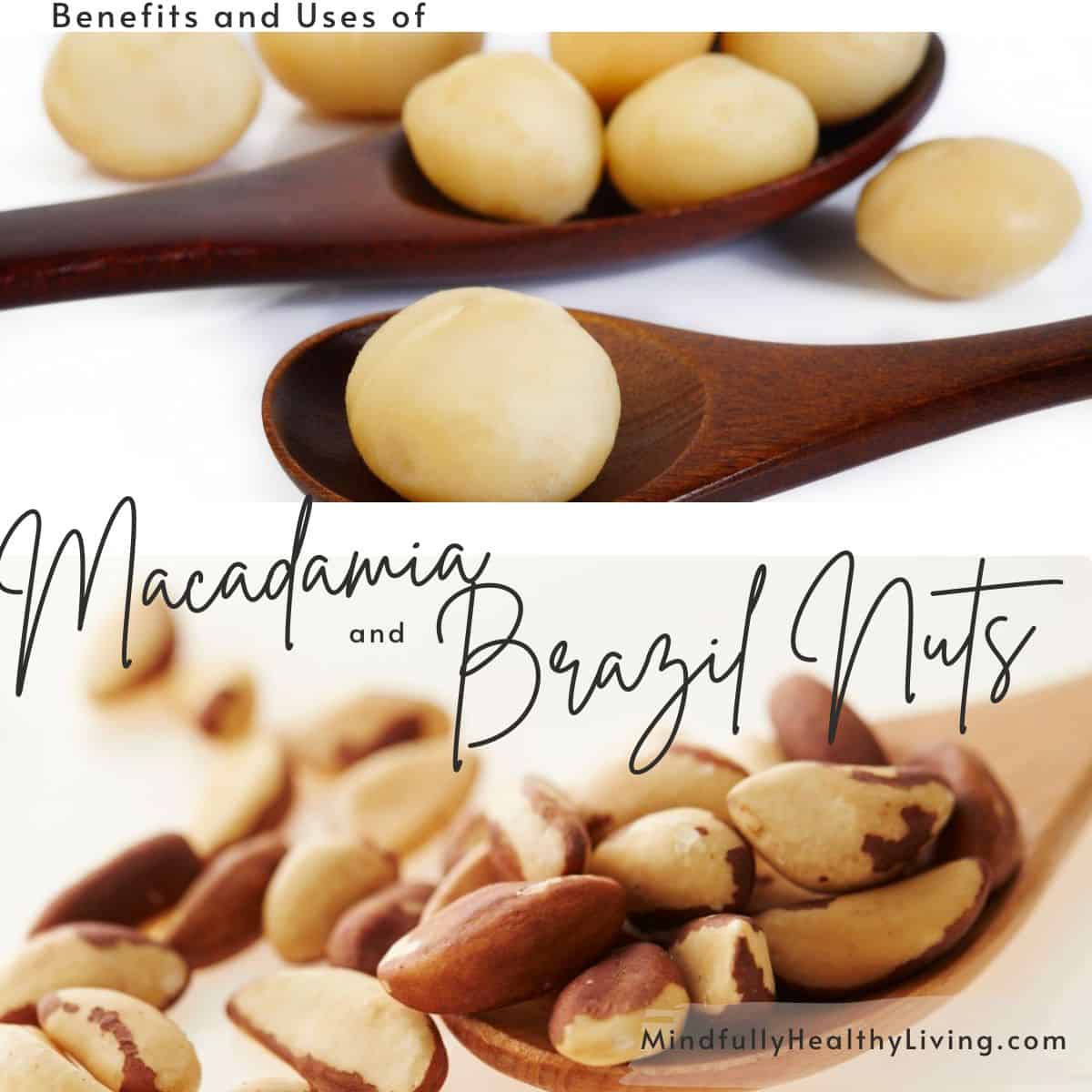
If I do say so myself, both Macadamia and Brazil nuts are delicious when covered in chocolate. Dark chocolate or milk chocolate-covered nuts are a scrumptious treat for a midday pick-me-up.
Because of their similar taste and texture, these nuts can often be substituted for one another in recipes. They each contain healthy fats and are a good source of protein.
Being high in protein and low in carbohydrates makes them an excellent addition to a low-carb or ketogenic diet. Because nuts are plant-based, they also work well in a vegan or vegetarian diet.
These two nuts can be used in various forms from homemade nut milk, nut butters, trail mixes, protein bars, cereals, baked goods, savory dishes, and more!
A special note of consideration must be taken for those who have allergic reactions to tree nuts. Both Macadamia and Brazil Nuts are considered tree nuts. Consult with your doctor before consuming any type of nut if you or anyone in your family has a history of tree nut allergy.
Macadamia Nut Origins
Technically speaking, Macadamia nuts are not nuts at all. What!? They are a seed that grows in clusters on a flowering tree that is native to Queensland, Australia. The macadamia tree is fast-growing with plenty of green blunt-tipped leaves.
Macadamia trees are most commonly grown in South Africa, Kenya, Costa Rica, and Australia. In the United States, Hawaii is one of the largest producers of macadamia due to its ideal tropical climate.
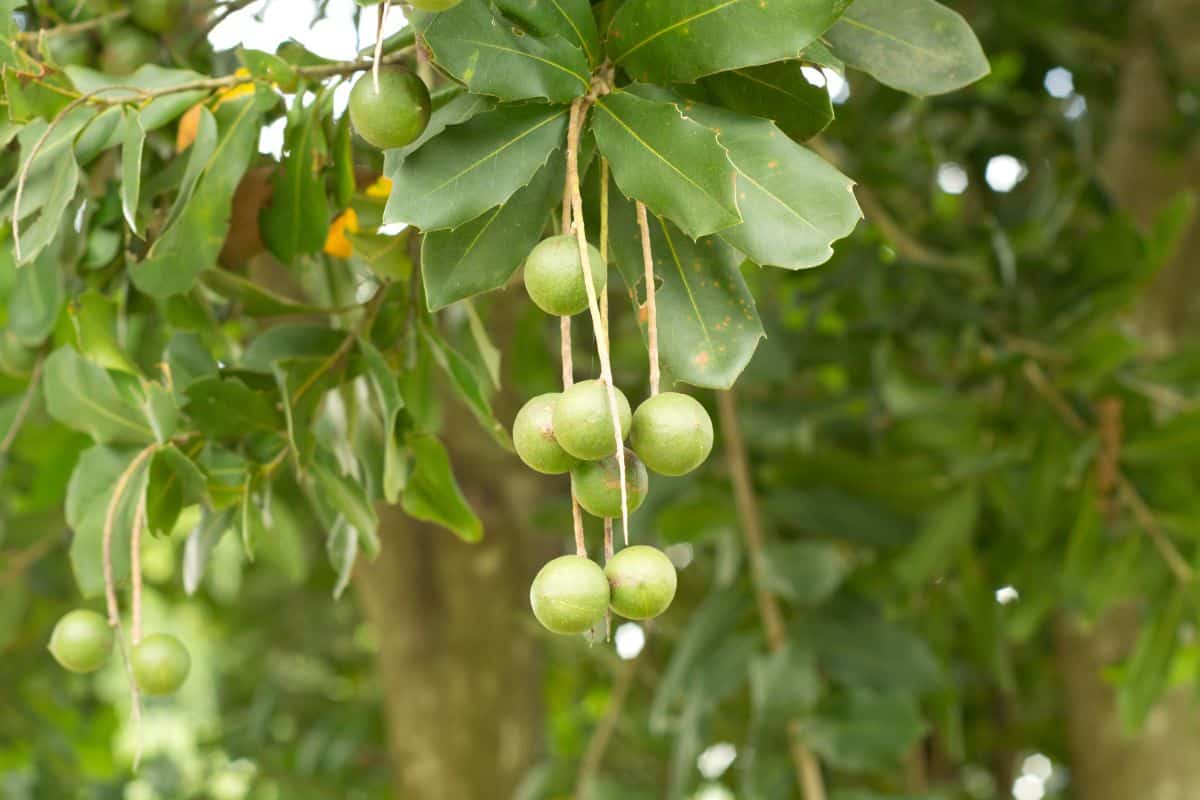
As you may have noticed, Macadamia nuts can be pricey. In fact, they are considered the most expensive nut in the world. The reason for this is the supply is low and the harvesting process can take 7-10 years from start to finish. They also are only typically able to be harvested a few times per year.
One part of the process includes cracking the very tough shell open. This requires a special machine, as a typical nutcracker will probably break! That is how hard their shell is!
Nevertheless, these delicious and nutritious "nuts" are well worth the investment!
Macadamia Nut Flavor
Macadamia seeds are found inside a shell. They are rounded and light ivory in color. They have a creamy and smooth texture with a buttery and nutty flavor.
Often, these nuts are lightly roasted which is believed to enhance their flavor with a hint of sweetness. This is why macadamia is used in the ever-popular macadamia cookie along with many other delicious baked goods.
Many connoisseurs compare the flavor to eating the meat of a coconut. While it pairs well with other tropical fruits and nuts, its rich flavor is truly unique. Because of this, many tropical trail mixes use dried coconut, and dried pineapple, along with lightly roasted macadamia nuts in the mix.
Benefits of Macadamia Nuts
Macadamia nuts are highly beneficial due to their high vitamin, mineral, and antioxidant levels. These nuts are most especially known for their high fat content. This nut is made up of 70-80% monounsaturated fats. These fats, combined with polyphenol antioxidants are known to improve heart health, reduce the risk of heart disease, and fight oxidative stress.
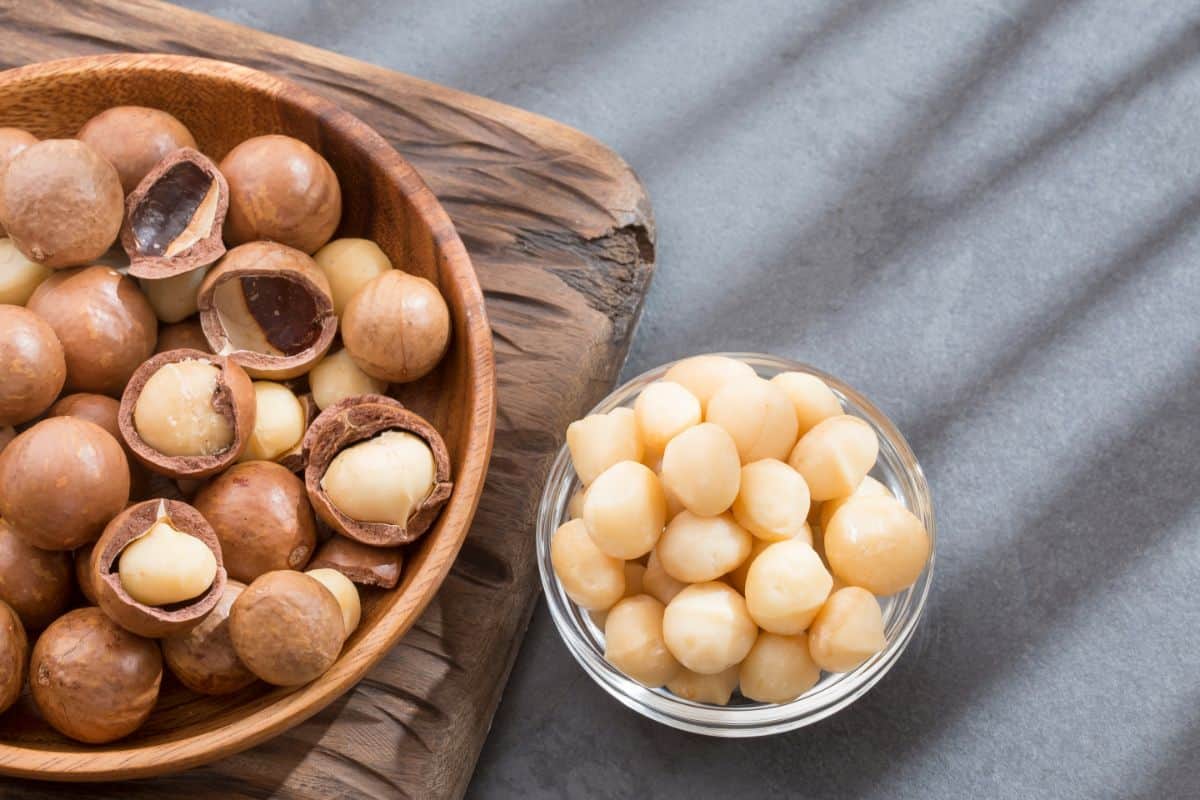
Notably, Macadamia also contains the rare omega-7 fatty acid, palmitoleic acid. This newly studied nutrient helps control cholesterol levels by reducing LDL (bad cholesterol) and increasing HDL, (good cholesterol). It is also being studied for anti-inflammatory properties, skin health, liver health, and the function of mucous membranes in the body. It truly is fascinating!
As a part of a healthy diet, these superfood nuts have been shown in studies to help control blood sugar levels and positively benefit weight management.
Macadamia is a good source of fiber, fat-soluble vitamin E, Copper, and B vitamins like Thiamin, and Manganese. One serving of macadamia nuts (one ounce of nuts) contains 204 calories, 2.5 grams of fiber, 21 grams of fat, and 2.25 grams of protein. Each serving contains approximately ¼ cup or 10-12 individual nuts.
Uses for Macadamia Nuts
You might be surprised to hear about the many uses for Macadamia nuts. For instance, Macadamia Nut Flour can be used in place of Almond, Coconut, Oat, or Cassava Flour.
It can also be made into rich and creamy nut milk. Cakes, cookies, and other desserts often include these decadent nuts. Macadamia milk is delicious!
In some Asian cuisines, macadamia is used in stir-fry recipes.
They can also be blended into nut butter, used in a smoothie, or chopped up into soups, and salads. You can also get them covered in chocolate, or eat them raw, roasted, and/or salted.
Brazil Nut Origins
When comparing Macadamia nuts vs Brazil nuts, both are technically seeds rather than nuts. They are also known as Amazon nuts (Bertholletia excelsa) because the Brazil Nut Tree is indigenous to the Amazon Rainforest. Brazil Nuts are an important export in the economy of South American countries in which they grow. Bolivia, Brazil, Venezuela, and Peru are the main countries that harvest these coveted Amazon nuts.
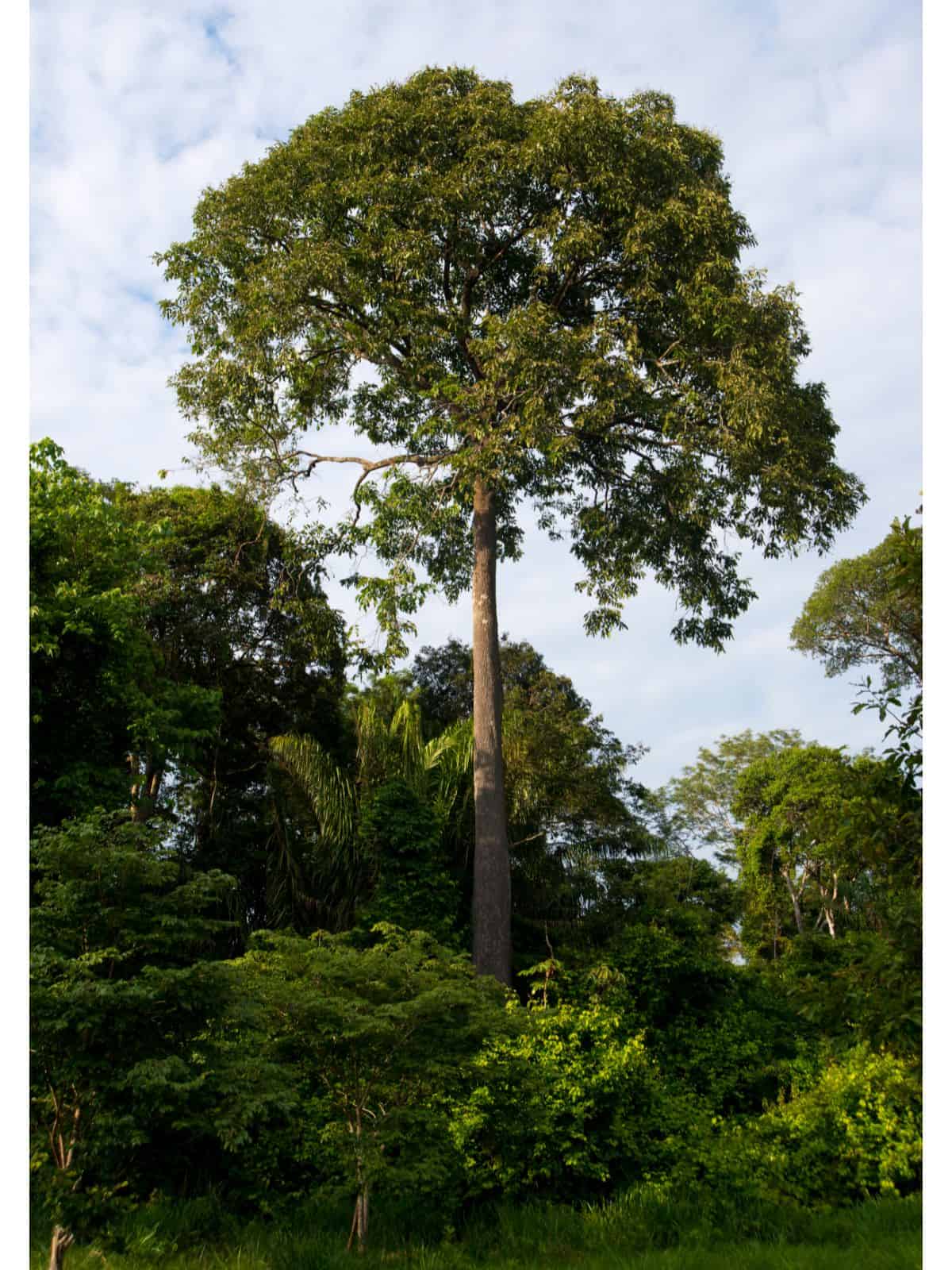
They are only able to be grown in the wild. The harvesters, known as castaneros, travel deep into the rainforest to stay for a month collecting the Brazil nut fruit. During January-March the rainforest is considered in the wet season.
The fruit of the trees typically falls to the forest floor, which makes it easier to collect. It's a good thing, too, because the Brazil nut tree (Baru nut tree) can grow as tall as 160 feet making it one of the tallest trees in the rainforest.
Brazil Nuts Flavor
Brazil nuts have a smooth texture and a mild, nutty flavor. There are hints of wood and sweetness in this uniquely flavored nut. Its smooth texture lends to the oily and buttery flavor and consistency. While smooth, it still produces a dense crunch when bitten into.
When comparing Macadamia nuts vs Brazil nuts, they are similar in consistency and flavor. As mentioned above, they are commonly compared to the taste of coconut meat with a crunchier texture. The tropical nature of Brazil nuts also makes them a perfect complement to other tropical fruits like pineapple, papaya, mango, lemon, and coconut.
Brazil Nut Benefits
When comparing the nutrition of Macadamia Nuts vs Brazil Nuts, Macadamia has a higher vitamin content, Brazil nuts are richer in minerals. Additionally, they have high levels of antioxidants that fight free radicals and reduce inflammation and the signs of aging. Like Macadamia and other nuts, they are rich in amino acids, protein, dietary fiber, and healthy fats.
Brazil nuts also have high levels of unsaturated fatty acids as well as polyunsaturated fats which can improve cardiovascular health by reducing LDL cholesterol and increasing HDL cholesterol.
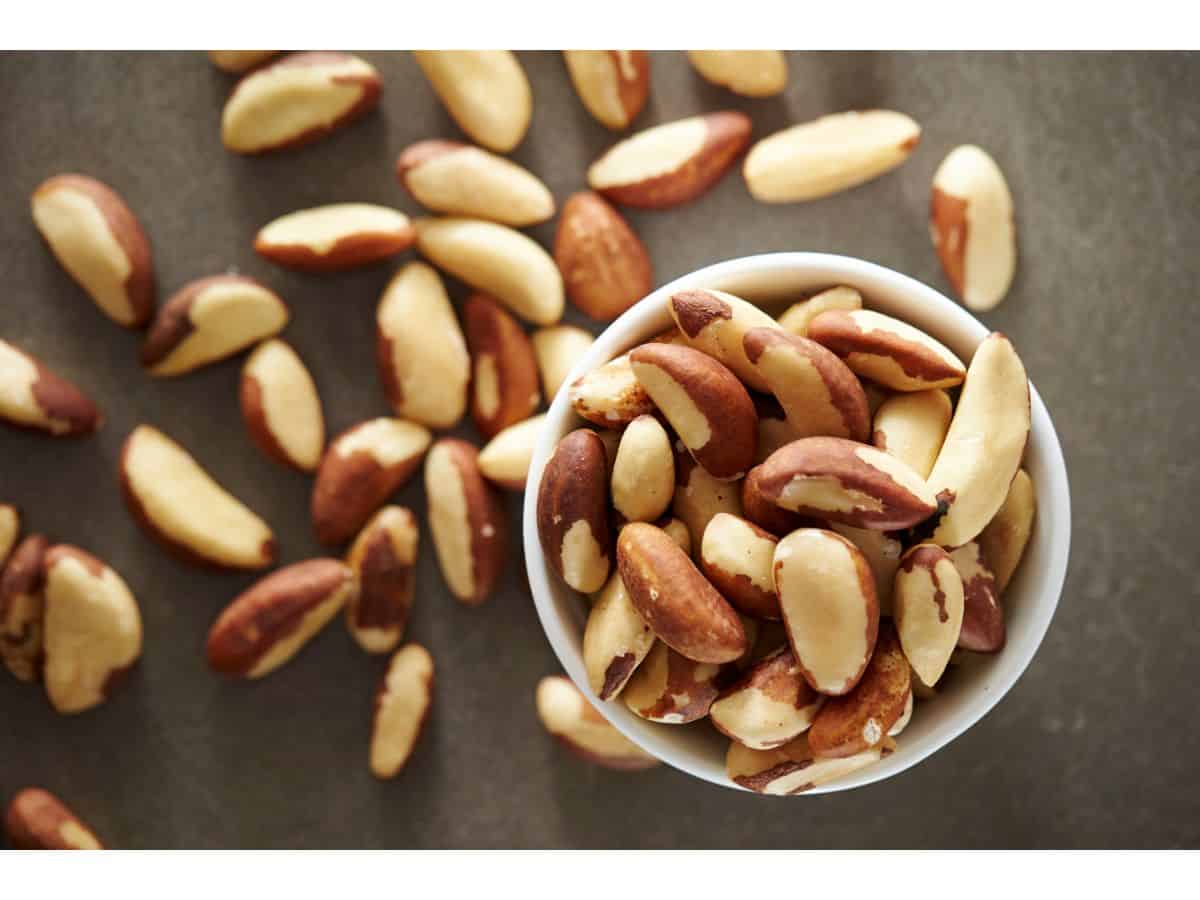
One of the most notable differences between Macadamia Nuts vs Brazil nuts is the one particular nutrient in Brazil nuts. They have a high amount of Selenium. Selenium is an essential mineral that is critical to immune system function, hormone and reproductive function, metabolism, and brain chemistry. All you need is one nut to reach the recommended daily amount of Selenium for adults.
Selenium also plays an important role in the function of the thyroid. Those with hypothyroidism often are deficient in Selenium.
Studies have shown that selenium plays a role in cognitive function. This study illustrates how selenium deficiency can contribute heavily to degenerative cognitive diseases such as Alzheimer's. Its antioxidant activity offers brain-protective properties against free radicals and oxidative stress.
Along with selenium, brazil nuts contain substantial amounts of other vitamins and essential minerals like magnesium and zinc.
These high-vibrational superfoods also benefit male and female fertility and conception. Check out this article for more foods that help implantation!
Warnings
Because of its high amount of selenium, regular consumption of Brazil nuts should be limited to just 1-2 per day or consumed infrequently. An excess amount of selenium can build up in the body resulting in toxicity. It would likely take a while, but frequent and excess amounts can be dangerous. While rare, this can cause serious health implications. Everything in moderation!
Be sure to consult with a qualified healthcare provider before making any significant dietary changes.
Brazil Nut Uses
Brazil nuts are versatile superfood nuts. They can be used to make vegan mayonnaise, cheese, and milk! They provide a deliciously nutty flavor that is very mild and can easily be masked or enhanced with natural sweeteners, spices, or flavorings.
Brazil nuts can also be used to make dressings and dips like pesto or hummus! Brazil nuts in pesto is one of my favorite ways to incorporate this superfood nut.
And of course, as mentioned above they can be made into trail mixes with dried fruits and other nuts, or eaten plain or salted. A little goes a long way!
Soaking, Sprouting, and Activating Nuts
Many nutrition advocates (including myself) believe that to preserve the rich antioxidants and nutrients in Brazil nuts (and all nuts) purchasing them raw, blanched, or sprouted is best.
If you buy raw, soak the nuts (2-4 hours for macadamia and 4-6 hours for Brazil nuts). The soak is also called sprouting or activating the nuts. This guideline applies to grains, nuts, seeds, and legumes, but the soaking times will vary!
In some cases, you may want to allow the nuts to air dry, sun dry, or use a dehydrator. If used in a recipe, you may not need to dry at all!
Soaking in warm or room-temperature water and a splash of apple cider vinegar helps to release the phytic acid, or anti-nutrients that coat the nut. These anti-nutrients are believed to prevent the absorption of nutrients and cause gastrointestinal disruptions.
While it may be an extra step in the preparation process, we believe it is a necessary one to ensure you can absorb all the nutritional goodness these superfoods have to offer!
Do you enjoy the delicious taste, benefits, and variety of uses of these nutty superfoods? When it comes to Macadamia Nuts vs Brazil Nuts: which do you prefer? Share with us in the comments below!
Healthy wishes,
Natalie


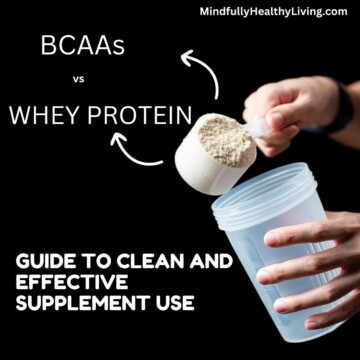
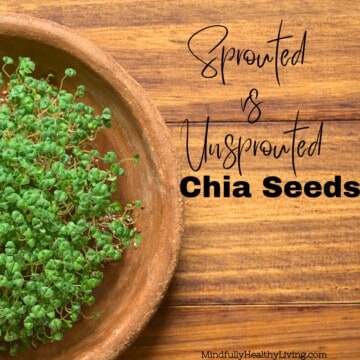

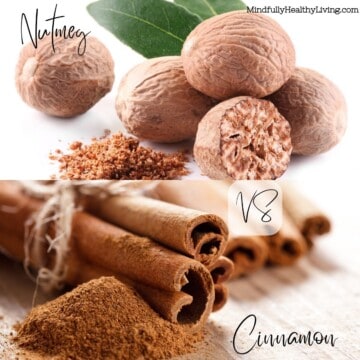
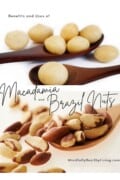
Olga says
I'm a big nut lover! I adore cashews and macadamia nuts. It is excellent that nuts are so healthy! But Im struggling to keep my day portions small.
Natalie Perry says
They are delicious and so good for you. Eat what feels right to you! I'm all about listening to your body
Angela says
love macadamia nut though I now know they are really seeds (learn something new every day). I like to put them in Cookies 🍪.
Natalie Perry says
The cookies are my favorite, too!